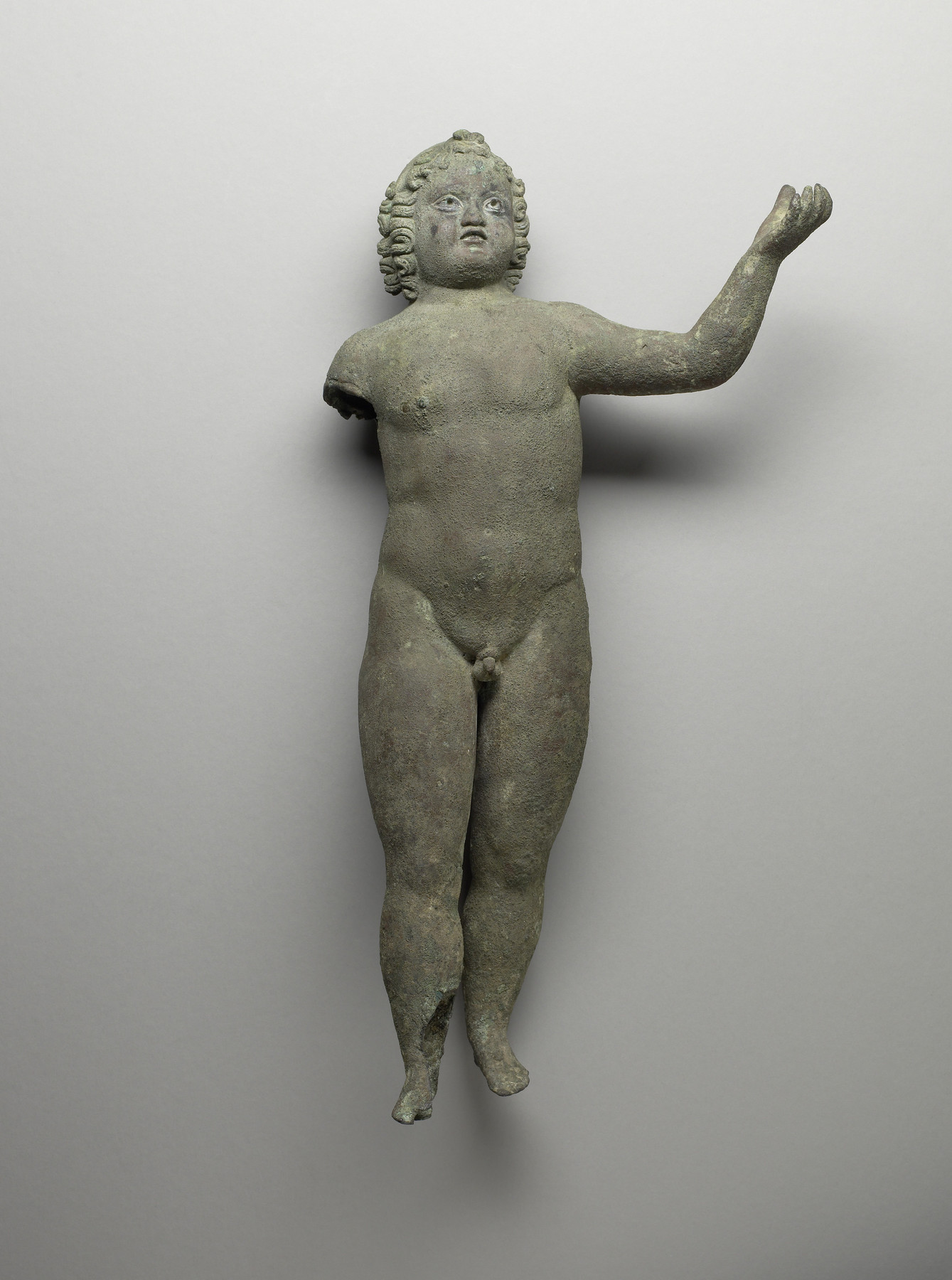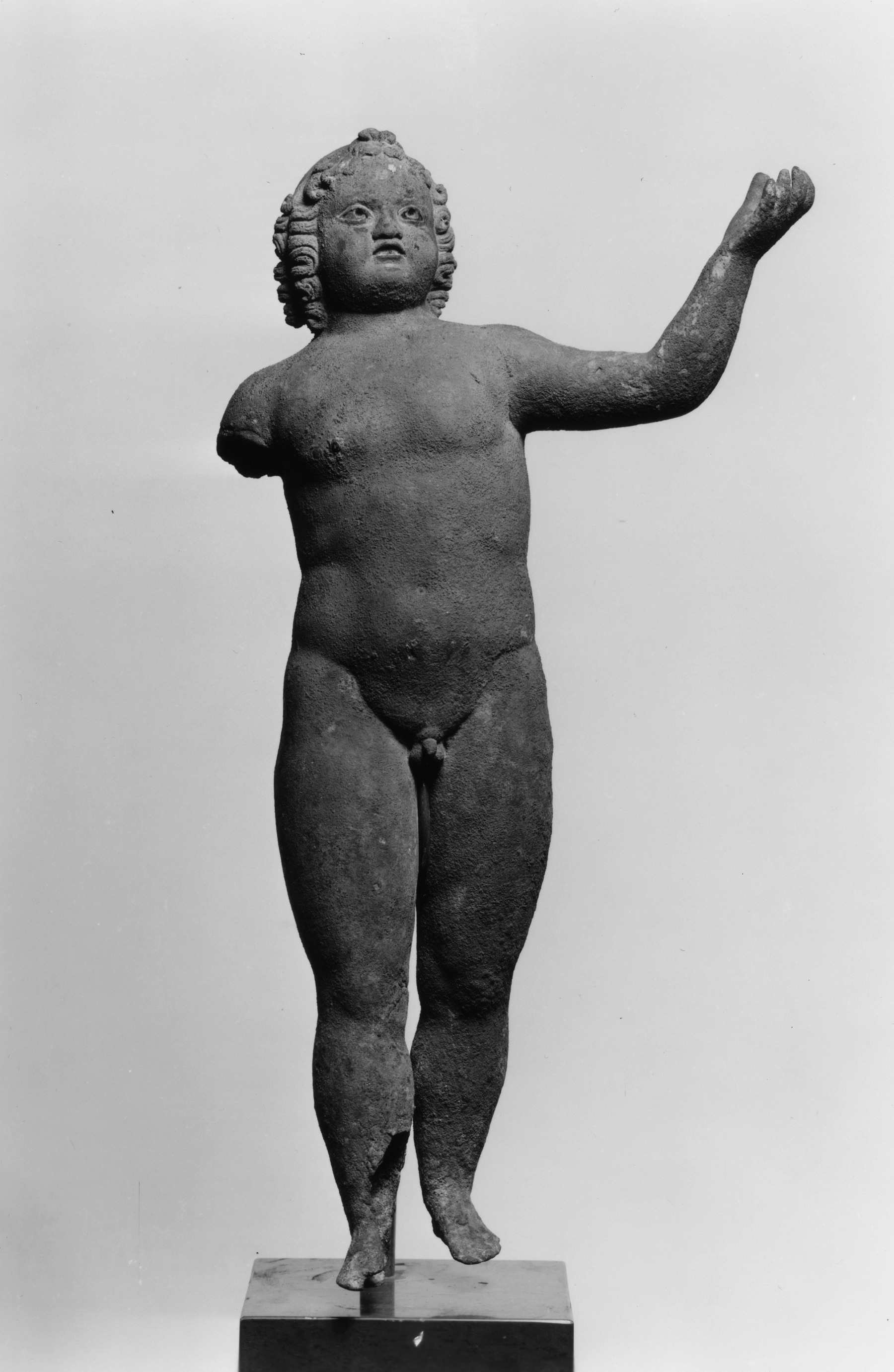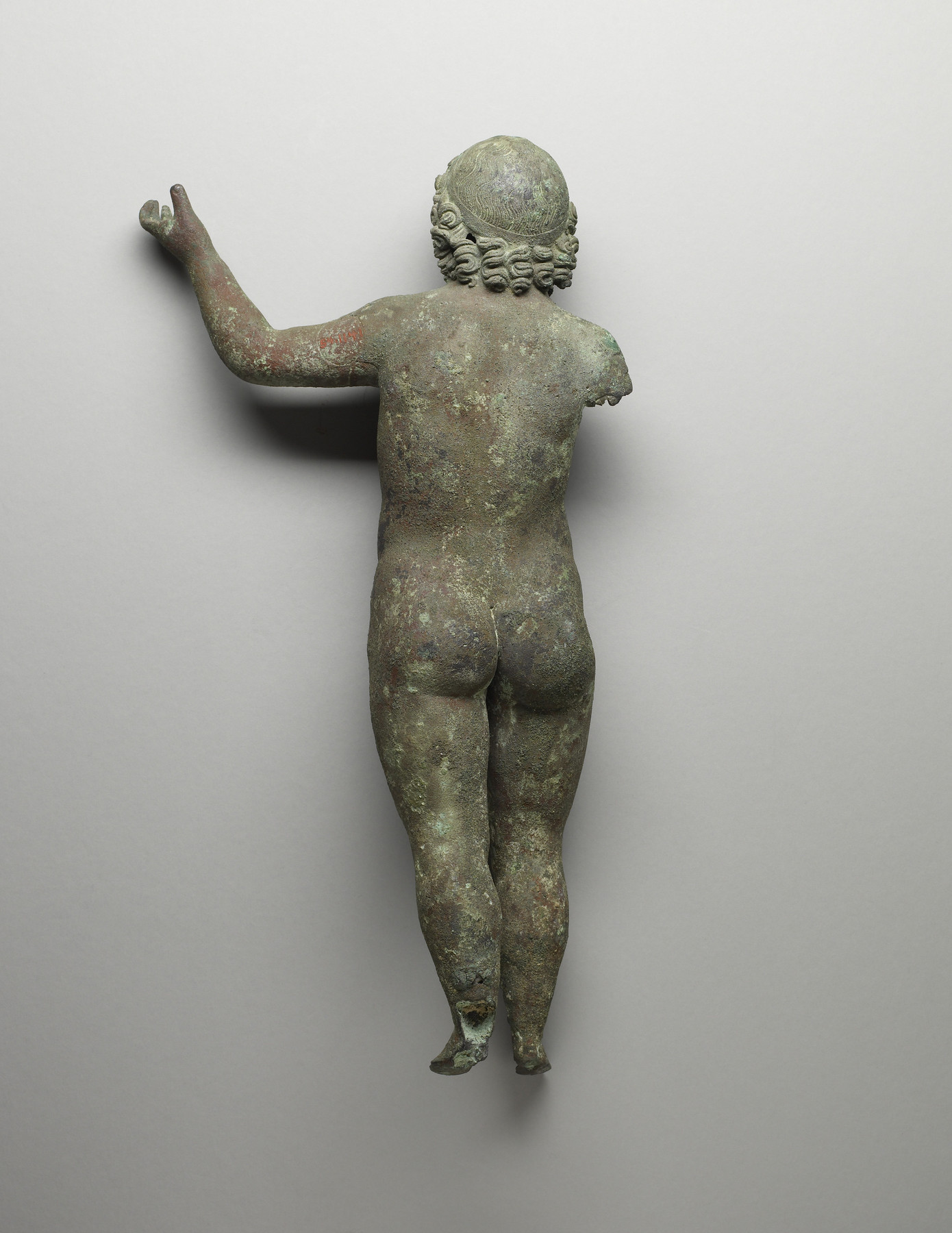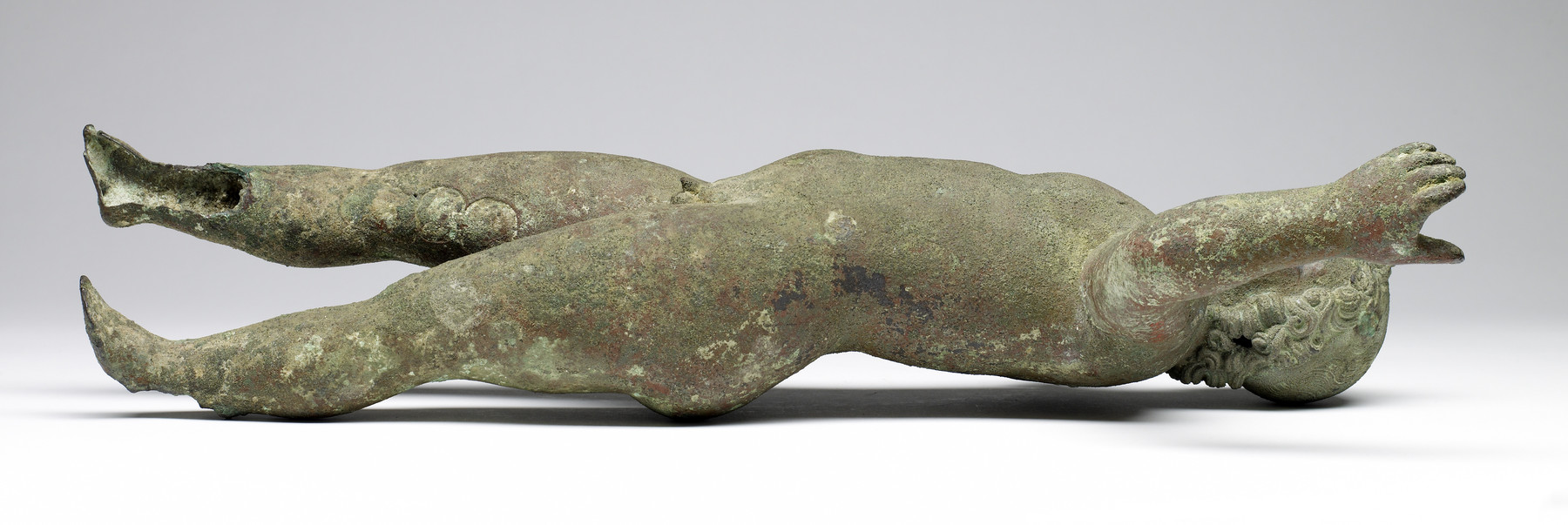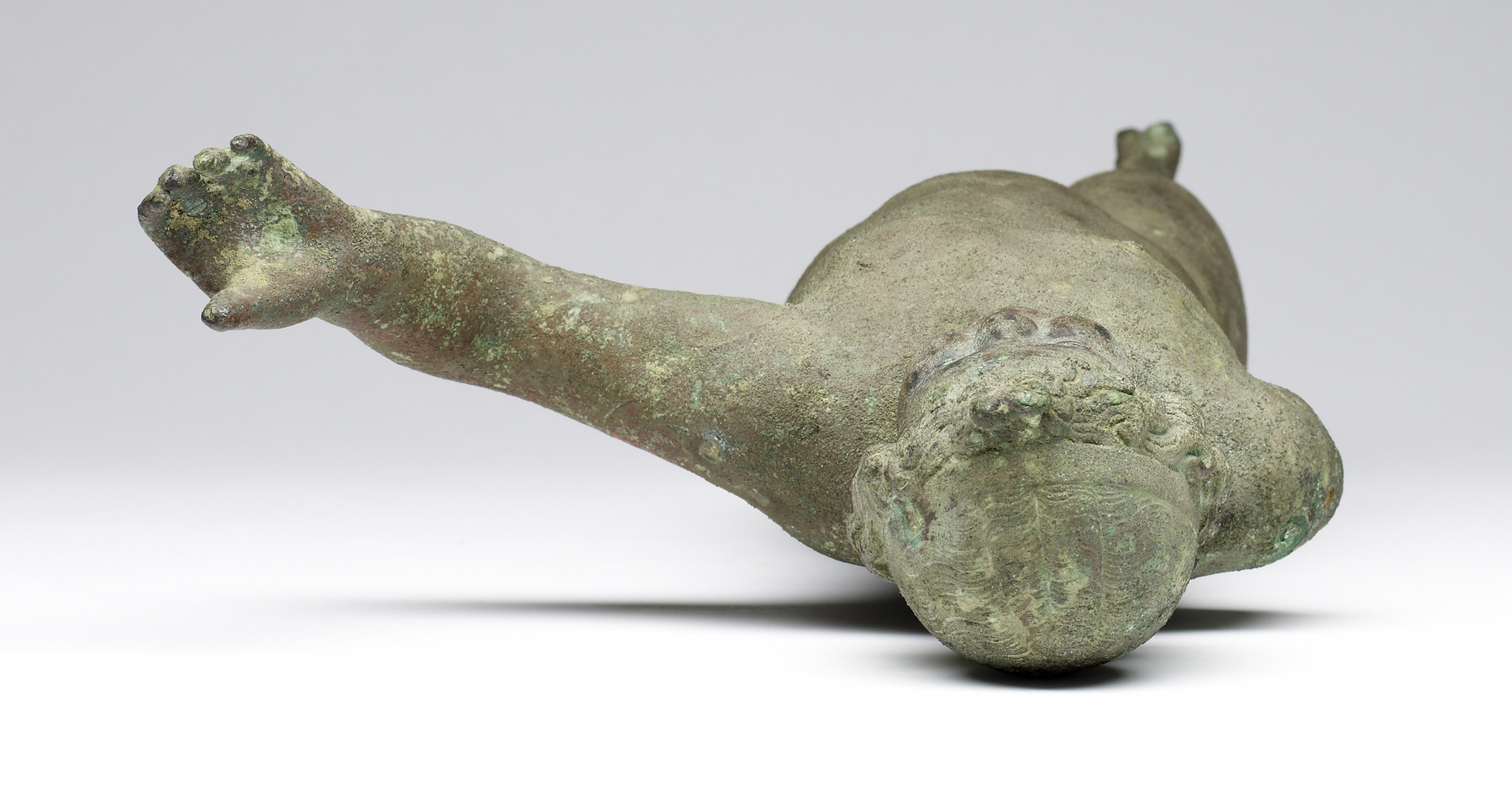Infant Dionysus
(Ancient Greece )
Standing with his weight on his right leg, left leg back as though taking a step, this child lifts his gaze up and to his left, as he also raises his left hand. The right arm is missing below the shoulder, as is much of the right foot. The child’s hair is arranged in tight ringlets around his face and the back of his neck; the curls are bound into a top knot above his forehead. The hair on top of his head is pressed flat and held by a wide diadem; wave patterns indicate the texture of the hair, and he may have a short braided section at the top of his head. The child is otherwise nude but may have worn a small garment, such as an animal skin, across his torso, as perhaps indicated by the fact that no nipple is rendered on the left. Statuettes of infant Dionysus wear animal skins in this manner. The head is disproportionately small compared to the rather solid body, and the eyes are disproportionately large on the head. The lips would have been inlaid, perhaps with copper (now missing), and there are traces of silver inlay on the eyes.
Provenance
Provenance (from the French provenir, 'to come from/forth') is the chronology of the ownership, custody, or location of a historical object. Learn more about provenance at the Walters.
Dikran Kelekian, New York and Paris [date and mode of acquisition unknown] [as from Port Said]; Henry Walters, Baltimore, 1913, by purchase; Walters Art Museum, 1931, by bequest.
Conservation
| Date | Description | Narrative |
|---|---|---|
| 8/10/1982 | Examination | examined for condition |
Measurements
H: 17 1/8 × max preserved W: 8 3/16 in. (43.5 × 20.8 cm)
Credit Line
Acquired by Henry Walters, 1913
Location in Museum
Not on view
Accession Number
In libraries, galleries, museums, and archives, an accession number is a unique identifier assigned to each object in the collection.
In libraries, galleries, museums, and archives, an accession number is a unique identifier assigned to each object in the collection.
54.1141

